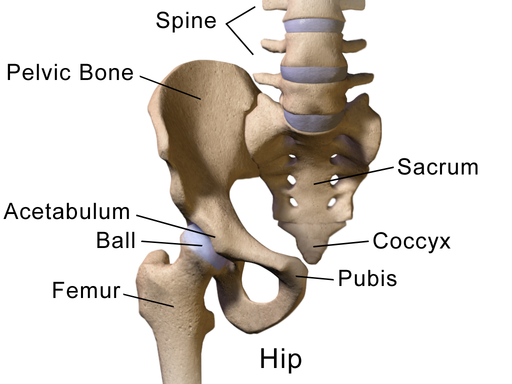The following is a list of the many common tests used by physical therapists and other orthopedic/orthopaedic practitioners when examining the hip. The tests will eventually have links to descriptions of the tests as well as video demonstrations. Before learning about the examination of the hip it is useful to review basic hip anatomy. If you know of a test that should be included in this list, please let us know.

The hip joint is a ball and socket joint and is the joint in the body with the greatest range of motion other than the shoulder. It is surrounded by very strong ligaments and muscles, making it a very stable joint. The hip is a very stable joint because it has to handle a great deal of force and still have such a large range of motion. The following is a list of some of the many special tests that have been developed for the hip.
Orthopedic Special Tests for the Hip
- Ely’s Test – Hip Flexor Pathology
- FADIR Test – Acetabular Labral Injuries
- Fitzgerald Test – Acetabular Labral Injuries
- Gaenslen’s Test
- Hibb’s Test
- Nachlas Test
- Ober’s Test – Iliotibial Band Syndrome
- Ortolani Click
- Patrick’s Test (FABER Test) – Femoroacetabular Impingement, Acetabular Labral Injuries
- Pelvic Rock Test
- Scour Test – Femoroacetabular Impingement, Acetabular Labral Injuries
- Stinchfield Test (Resisted Straight Leg Raise) – Femoroacetabular Impingement
- Telescoping Sign
- Thomas’ Test – Acetabular Labral Injuries, Hip Flexor Pathology
- Trendelenburg Test / Trendelenburg Sign
- Yeoman’s Test
Additional reading on orthopedic testing of the hip:

Orthopedic Assessments Made Easy: Hip Joint Assessment
The Orthopedic Assessments Made Easy orthopedic guide book is written by Dr. Rina Pandya, a professional Doctor of Physiotherapy with more than 23 years of experience in the field, who now is a senior lecturer of Physiotherapy at the University in England after years of work in the UK, India, USA and Oman.

Special Tests for Orthopedic Examination
First published more than 20 years ago, Special Tests for Orthopedic Examination, now in its Fourth Edition, continues to follow the authors’ initial goals of providing a simple, pocket-sized manual for practical learning purposes.
You may also be interested in…
Lists of orthopedic tests for other joints.




